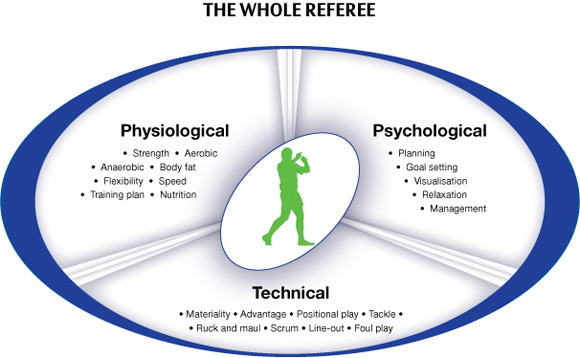The signals
The referee signals are an applicable standard in any game of Rugby. They are part of the Law book where they are pictured and described. There are four signals which are shown by the referee to indicate a stoppage:
- Try.
- Penalty kick.
- Free kick.
- Scrum awarded.
These signals, plus the signal for advantage, are called the primary signals.
Because the reason for a penalty kick or a free kick, and sometimes the reason behind the referee’s decision to award a scrum or the indication to play the advantage Law are not easily understood by players and spectators, there is another set of signals.
These are called secondary signals, and each is linked to one of the primary signals; for example, to indicate that a knock-on has occurred, i.e. why the scrum has been awarded. These signals make a big difference to the referee’s performance.
In addition to the primary and secondary signals, a third set of signals exists, known as ‘tertiary’ signals. These signals include the signal for forming a scrum, for a bleeding wound, the call for a doctor/physiotherapist and the call for the timekeeper to stop/start the watch.
Referees must apply the signals in a sequence:
- What will happen next (primary signal)?
- What was the reason for the stoppage (secondary signal)?
- Is there additional information to be given by the referee (tertiary signal)?
Remember that all referees have a unique style, yet they are all obliged to follow the Law book to achieve an uniform application all over the world.
